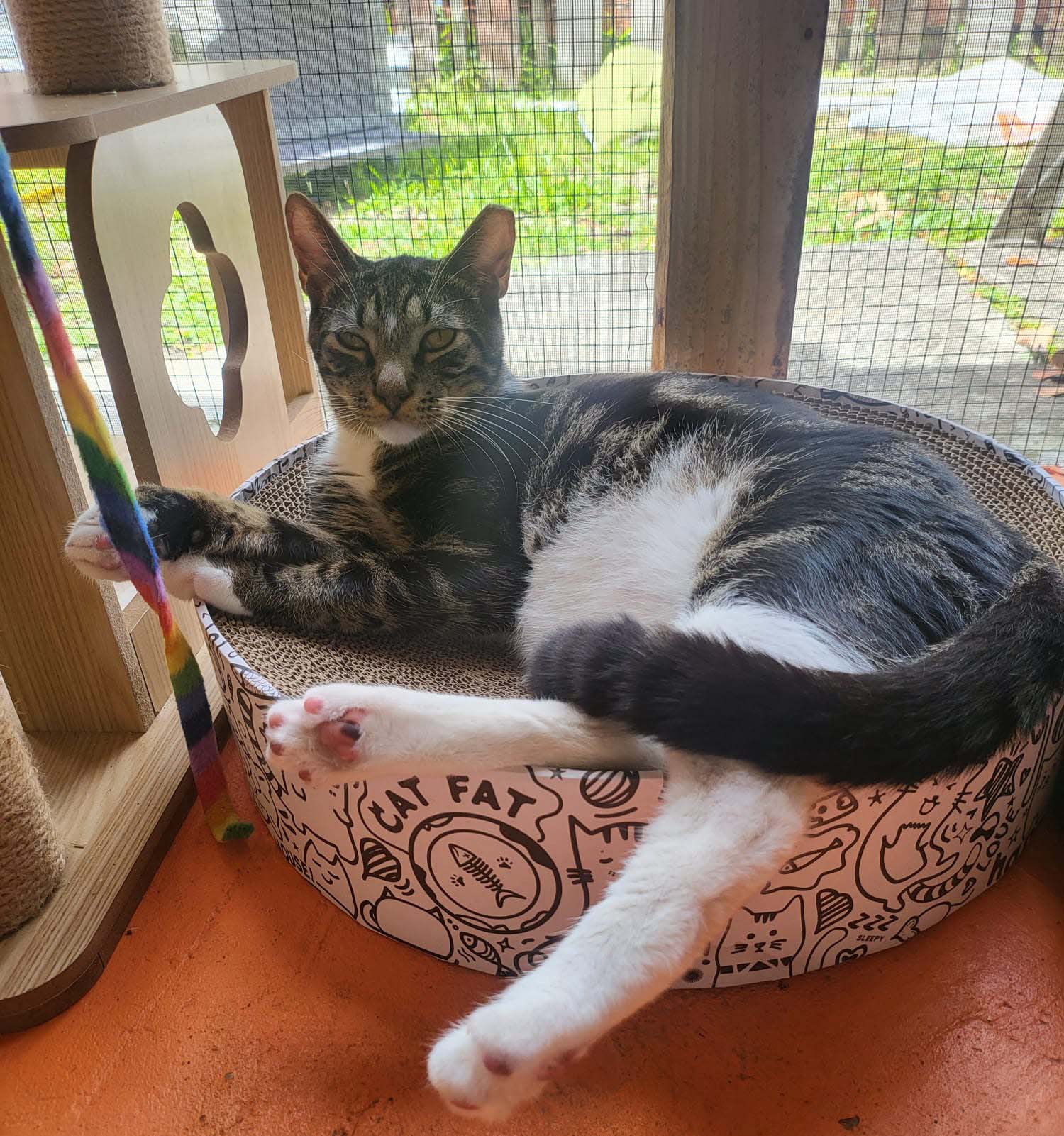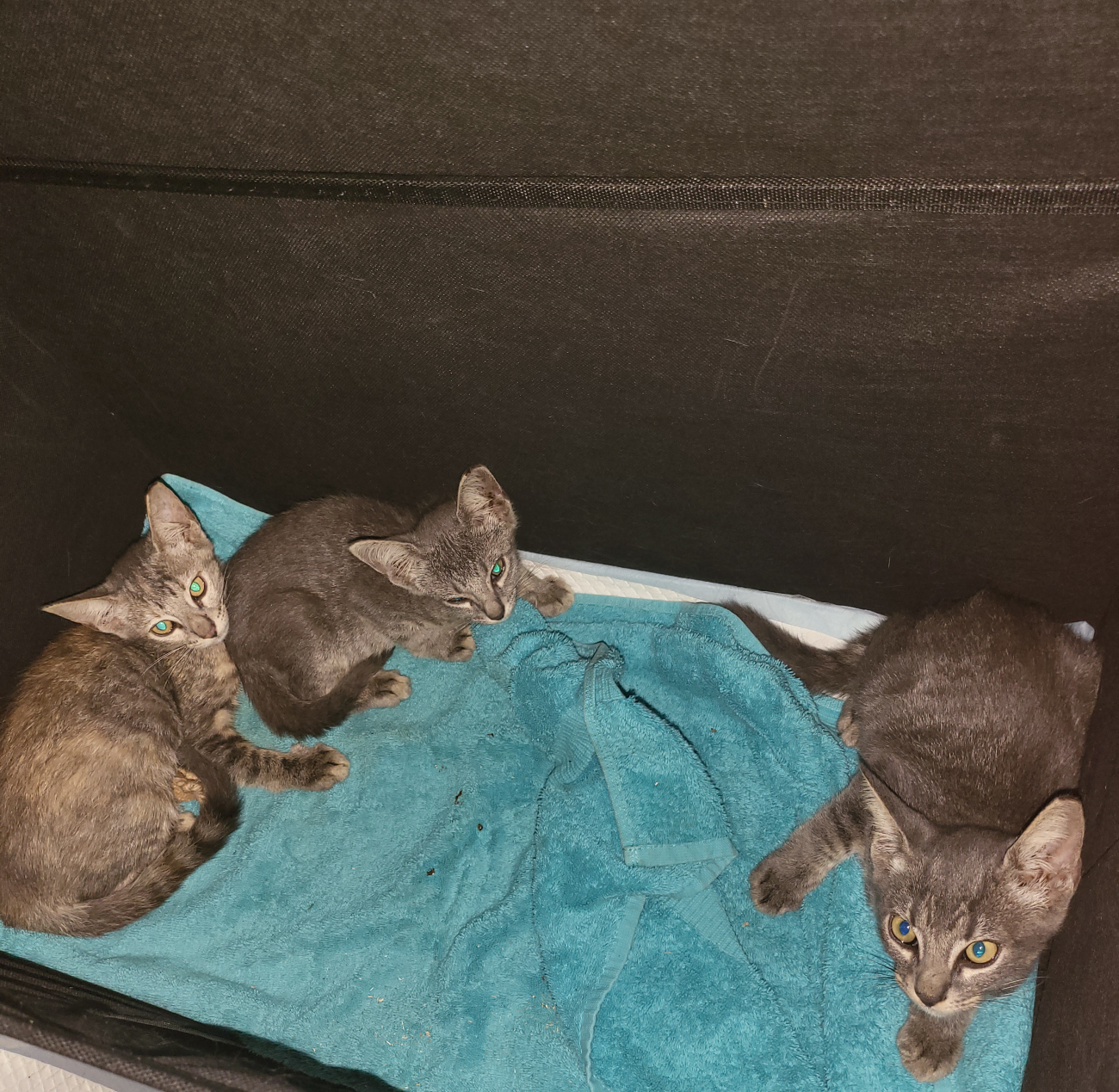
So, you came across a cat outdoors. Maybe she was in your parking lot at work, or behind your favorite local store, or even in your own backyard. Perhaps you even saw her on vacation. You want to act…but what do you do?
The answer depends on the cat! Cats can have unique needs based on many factors, and we’ll walk you through the basics in this quick guide.
Before you read on, please remember:
In most cases, cats being outdoors is nothing to be concerned about. Cats have always lived outdoors since the species Felis catus came into existence, and they always will, even while some cats live indoors with us.
Do NOT call animal control or bring the cat to an animal shelter. Many shelters still kill most cats who enter their doors, even if the cats are friendly. Unless you know your local shelter has a Trap-Neuter-Return (TNR) program or other lifesaving programs for cats, it is not in a cat’s best interest to bring her to the shelter.
Is the Cat a Kitten?
Kittens, especially those under four weeks of age, have special needs that differ from adult cats.
Is the Cat Injured or Ill?
An injured or ill cat may have visible wounds, be limping or walking strangely, or otherwise look as if she is not thriving.
The cat may need to be brought to a veterinarian immediately. Consult a community cat-friendly veterinarian first and describe the situation. They can help you decide what course of action is in the cat’s best interest.
What you can do: If a veterinarian does advise that you bring the cat into a clinic, do not try to handle the cat or pick her up. An injured or ill cat, especially a community cat who is not socialized, can become scared and defensive, which may result in harm to you or the cat. Humanely trap her instead.
Contact a local animal rescue or Trap-Neuter-Return (TNR) organization, or maybe even your local animal shelter, to see if they have humane box traps you can borrow.
(Note: If you want to borrow a trap from an animal shelter, make sure you ask what the shelter’s specific requirements are and if the trap can be used for TNR. Some shelters may require you to bring the cat in once she is trapped, and she may be killed.).
Is the Cat Eartipped?
An eartip is the universal sign that a cat has been spayed or neutered through a Trap-Neuter-Return (TNR) program. If you see a cat outdoors missing the tip of her left ear, she is eartipped.
That means your job is easy: just allow her to stay right where she is! She’s a community cat, meaning she is unowned and her home is outdoors. Community cats are generally not socialized to people and cannot be adopted into indoor homes. They thrive outside, and that is where they belong.
What you can do: Since the cat has been spayed through a TNR program, she may already have a caregiver who provides her with regular food, water, and an outdoor shelter. If you’d like, you can ask around to see if you can determine who cares for her.
If you believe she doesn’t have a caregiver, you can become one!
Is the Cat a Community Cat Without an Eartip?
If the cat is not friendly, she is a community cat. She lives and thrives outdoors and belongs in her outdoor home with her feline family. But since she does not have an eartip, she will need to be spayed through a TNR program.
What you can do: Borrow a humane trap from a local TNR group, rescue group, or animal shelter and start the TNR process.
Once the cat has been spayed or neutered, vaccinated, eartipped, and returned to her outdoor home, you can become her caregiver. Community cats are accustomed to and thrive outdoors, but a caregiver can improve their lives even further.
Is the Cat Friendly?
If the cat approaches you, rubs against you, or lets you touch her, she is socialized, meaning she is friendly and accustomed to people. If a friendly cat looks unkempt, distressed, or underweight, she may be a stray or abandoned cat.
What you can do: Ask around to see if she has a family in the nearby area. If you have no luck, bring her to a veterinarian or rescue group to be scanned for a microchip . If the microchip brings up nothing, post a photo of her on social networks and flyers in your community to try and find her family.
If you cannot find the cat’s family, humanely trap and bring her to a veterinarian to be spayed or neutered, vaccinated, and have her health assessed. The cat may go into a cat carrier on her own, but you can also contact your local rescue group, TNR group, or animal shelter to borrow a trap to humanely trap her.
If you have time and resources to adopt or foster, then once the cat has been spayed or neutered, you can bring her into your home to care for and socialize her.
If you don’t have the time or resources to adopt or foster, please know that adoption is not a necessity for socialized cats who are thriving outdoors. Thriving socialized cats will have clean and shiny coats, look to be a healthy weight, or otherwise look in good shape. For these cats, friendly as they may be, you can always do TNR and allow her to live out her life in her outdoor home. You can become her caregiver and provide regular food, water, and shelter.
If the cat is NOT thriving outdoors and you don’t have the means to help her, DO NOT take her to an animal shelter.




